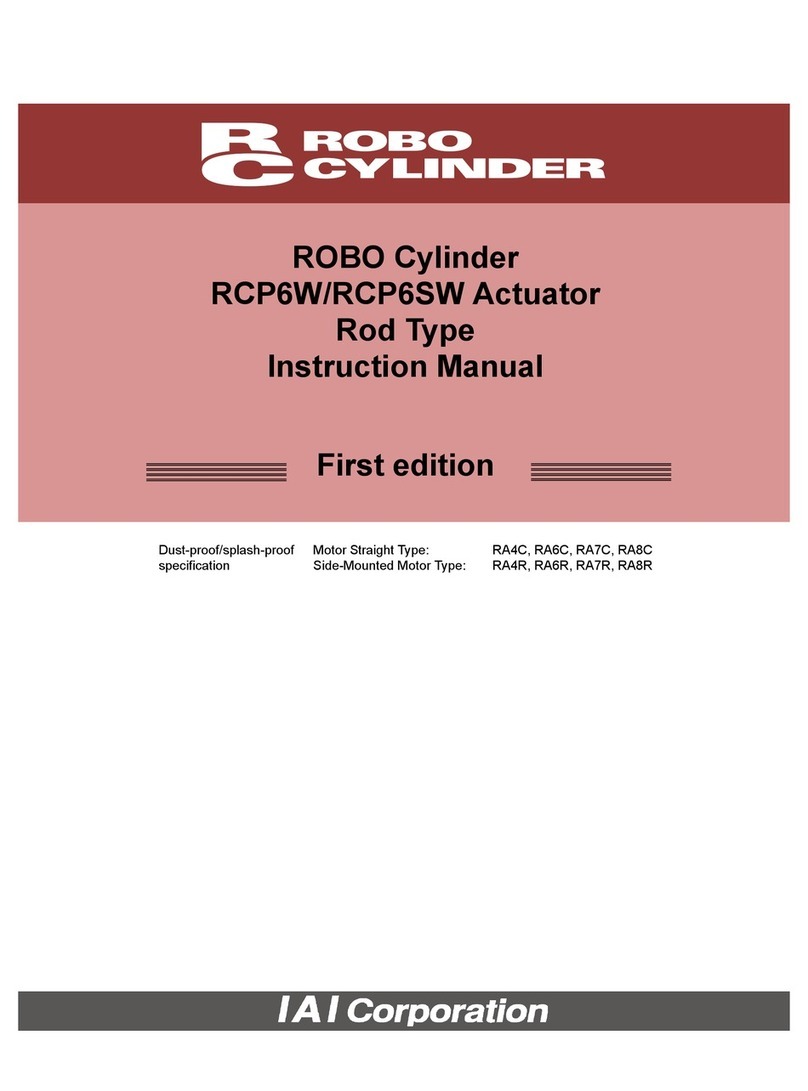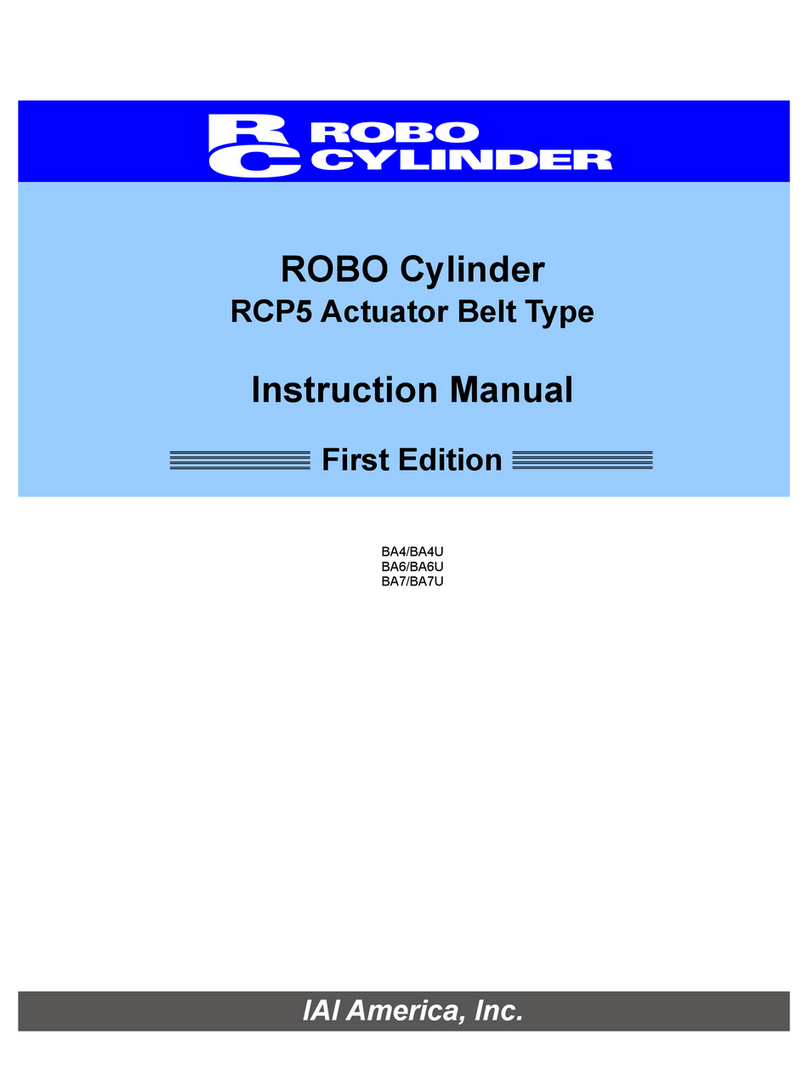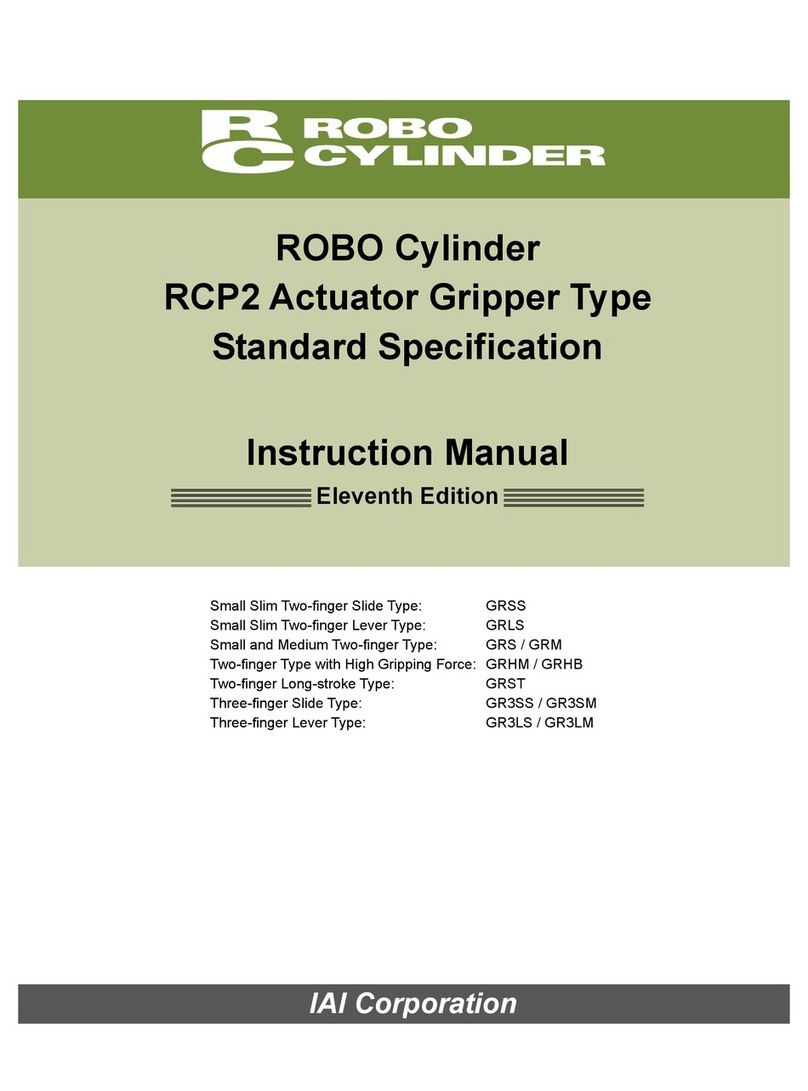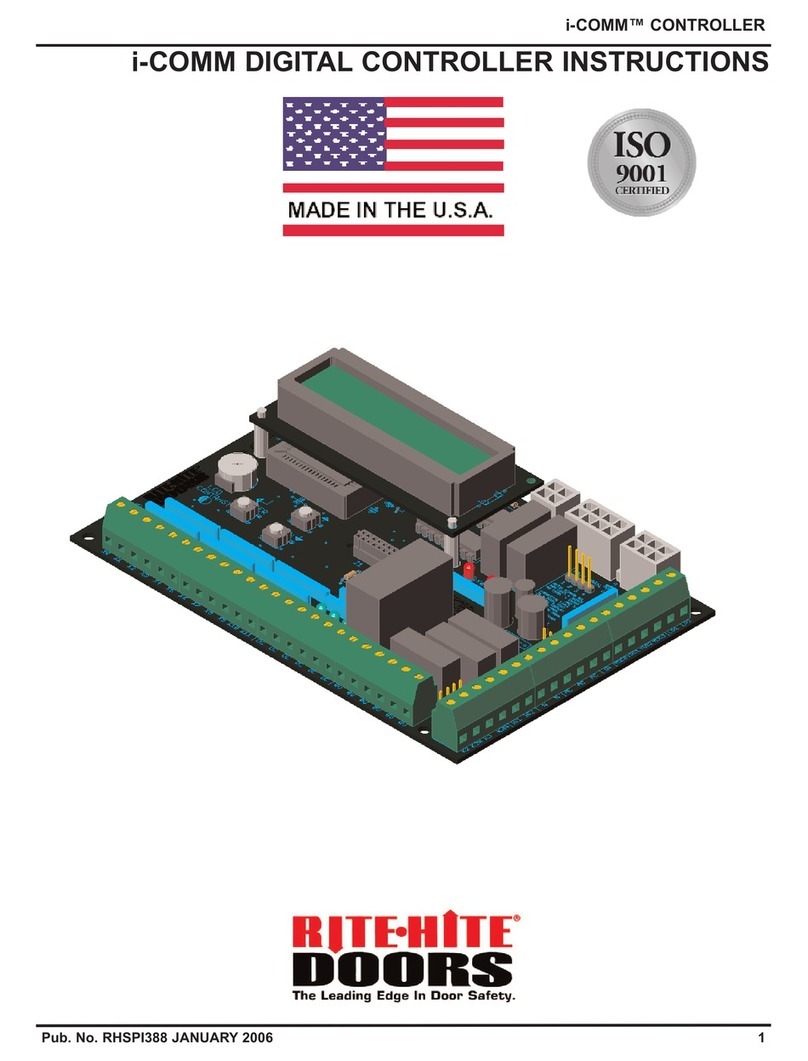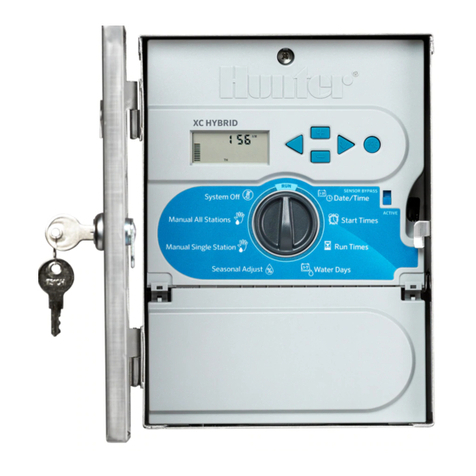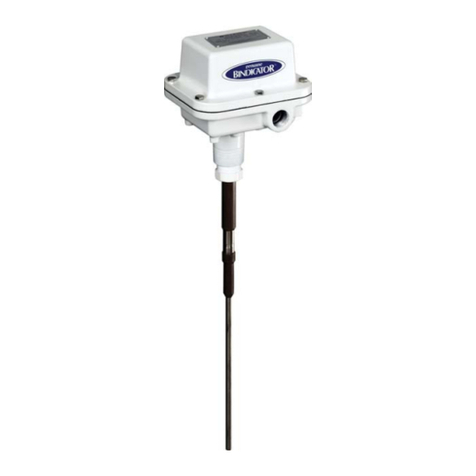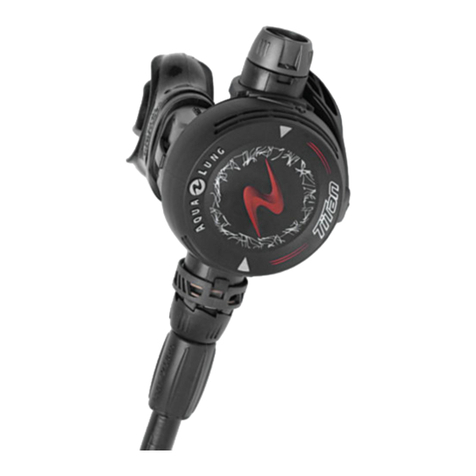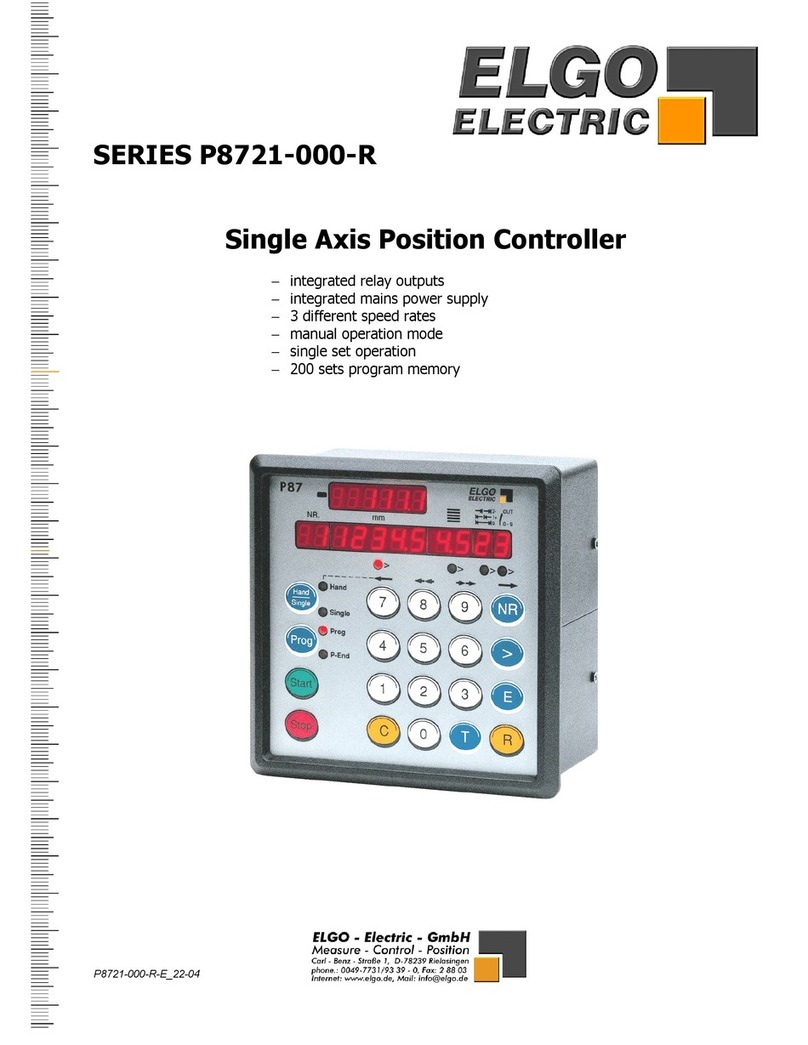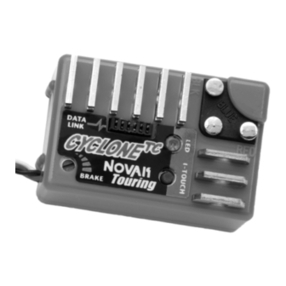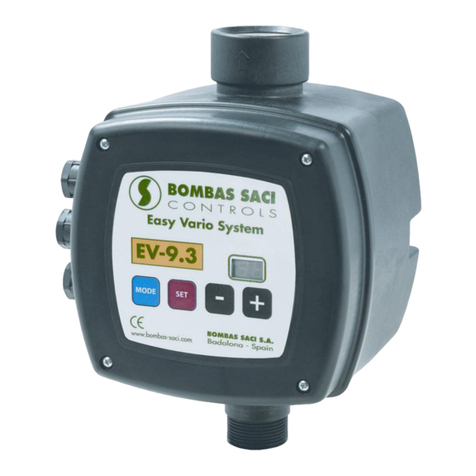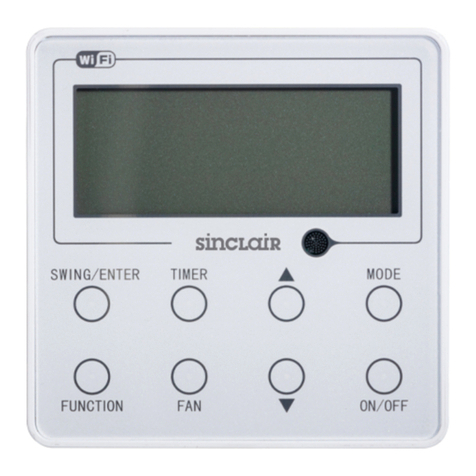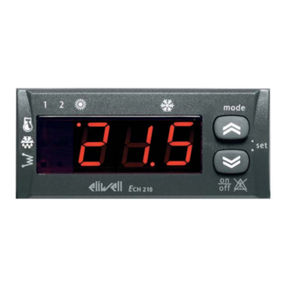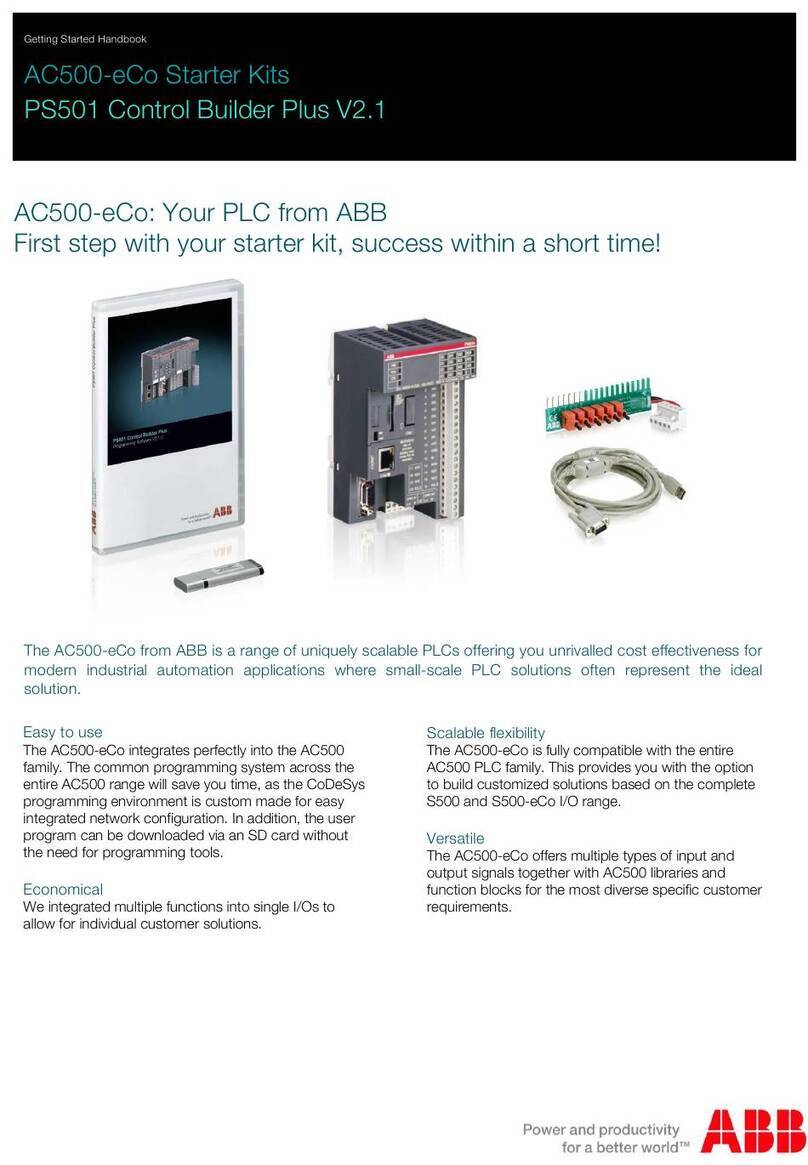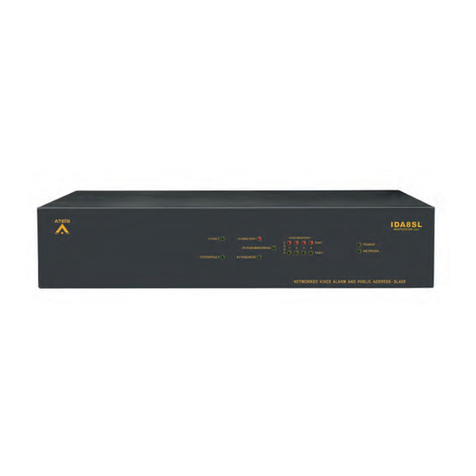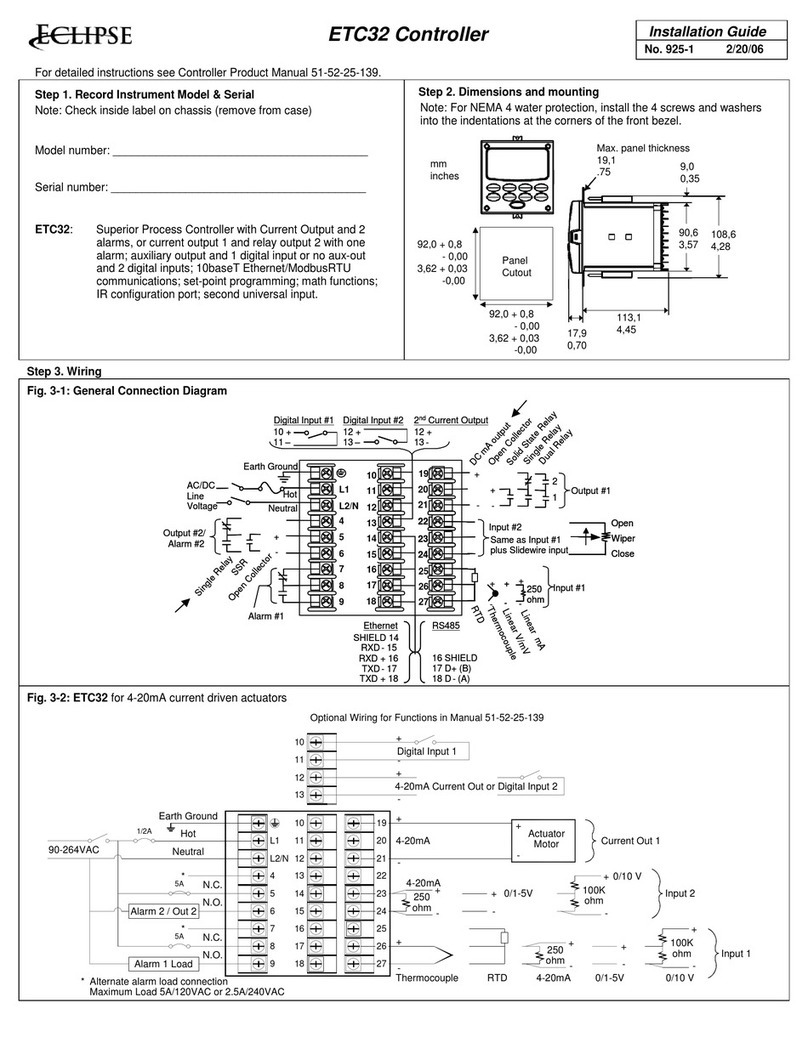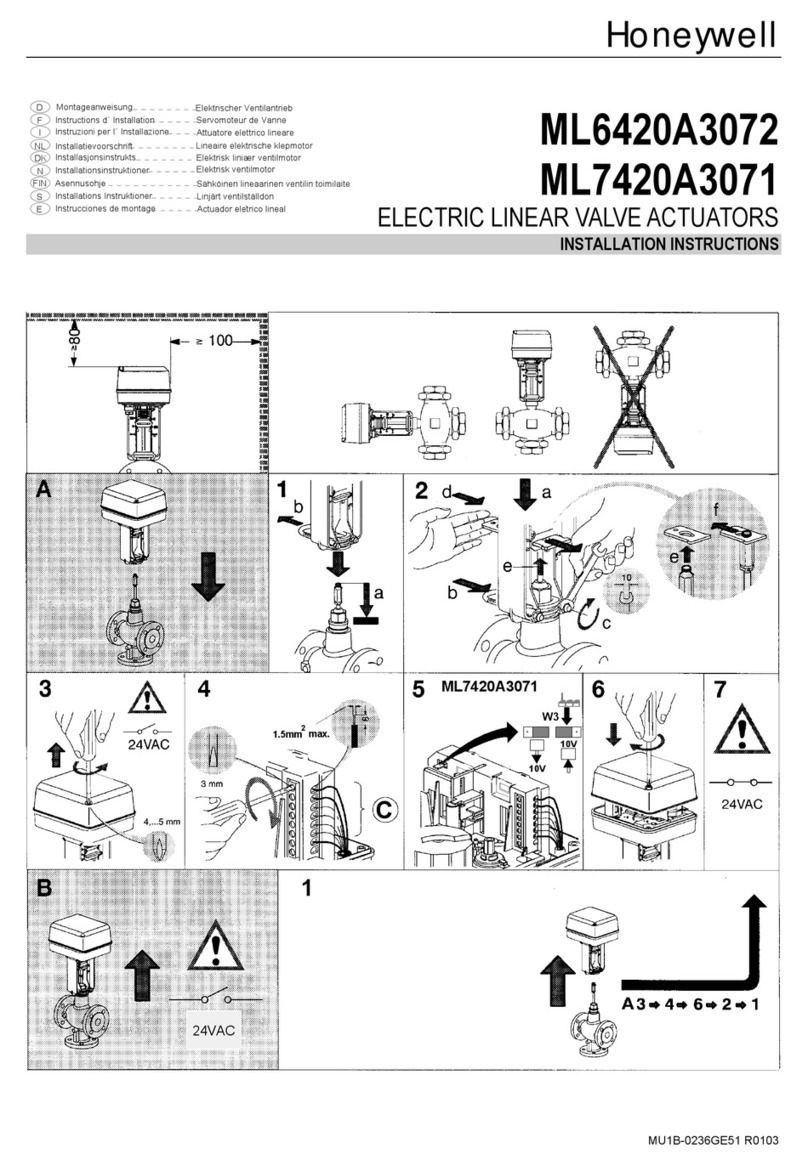ROBO Cylinder RCP2 Series User manual

Small Type, 330-degree Rotation Specification [RTBS/RTCS Types]
Small Type, Multi-rotation Specification [RTBSL/RTCSL Types]
Medium Type, 330-degree Rotation Specification [RTB/RTC Types]
Medium Type, Multi-rotation Specification [RTBL/RTCL Types]
Large Type, 330-degree Rotation Specification [RTBB/RTCB Types]
Large Type, Multi-rotation Specification [RTBBL/RTCBL Types]
IAI America, Inc.
Instruction Manual
Fourteenth Edition
ROBO Cylinder
RCP2 Actuator
ROBO Rotary Type


Please Read Before Use
Thank you for purchasing our product.
This Instruction Manual explains the handling methods, structure and maintenance of this product,
among others, providing the information you need to know to use the product safely.
Before using the product, be sure to read this manual and fully understand the contents explained
herein to ensure safe use of the product.
The DVD that comes with the product contains instruction manuals for IAI products.
When using the product, refer to the necessary portions of the applicable instruction manual by printing
them out or displaying them on a PC.
After reading the Instruction Manual, keep it in a convenient place so that whoever is handling this
product can reference it quickly when necessary.
[Important]
•This Instruction Manual is original.
•This product is not to be used for any other purpose from what is noted in this Instruction Manual.
IAI shall not be liable whatsoever for any loss or damage arising from the result of using the
product for any other purpose from what is noted in the manual.
•The information contained in this Instruction Manual is subject to change without notice for the
purpose of production improvement.
•If you have any question or finding regarding the information contained in this Instruction Manual,
contact our customer center or our sales office near you.
•Using or copying all or a part of this Instruction Manual without permission is prohibited.
•The company names, names of products and trademarks of each company shown in the
sentences are registered trademarks.


Table of Contents
Safety Guide............................................................................................................................................ 1
Caution in Handling ................................................................................................................................. 8
International Standards Compliances.................................................................................................... 10
Names of the Parts.................................................................................................................................11
1. Specification Check ...............................................................................................................12
1.1 Checking the Product................................................................................................................ 12
1.1.1 Parts................................................................................................................................ 12
1.1.2 Related Operation Manuals for the Each Controller Supported by this Product ............ 12
1.1.3 How to Read the Model Nameplate................................................................................ 13
1.1.4 How to Read the Model Number .................................................................................... 13
1.2 Specifications .......................................................................................................................... 14
1.2.1 Small Type ...................................................................................................................... 14
1.2.2 Medium Type .................................................................................................................. 17
1.2.3 Large Type ...................................................................................................................... 20
1.2.4 Cleanroom Specification................................................................................................. 23
1.2.5 Dustproof/Splash Proof Specification ............................................................................. 23
1.3 Notes on Use ............................................................................................................................ 24
1.3.1 Range of Operation and Home Return........................................................................... 24
1.3.2 Home return direction ..................................................................................................... 24
1.3.3 Home return operation.................................................................................................... 25
1.4 Options ...................................................................................................................................... 28
1.4.1 Reversed-home Specification (Model : NM) ................................................................... 28
1.4.2 Shaft Adapters (Model : SA) ........................................................................................... 28
1.4.3 Table Adapters (Model : TA)............................................................................................ 29
1.4.4 Brake-Equipped Type (Model:B) .................................................................................. 30
1.5 Motor • Encoder Cables ............................................................................................................ 31
1.5.1 Small Type [RTBS, RTBSL, RTCS, RTCSL] .................................................................. 31
1.5.2 Medium Type (RTB, RTBL, RTC, RTCL) Large Type (RTBB, RTBBL, RTCB, RTCBL) 33
1.5.3 Cleanroom, Dust and Splash-Proof Type ....................................................................... 35
2. Installation..............................................................................................................................38
2.1 Transportation ........................................................................................................................... 38
2.2 Installation and Storage • Preservation Environment................................................................ 40
2.3 How to Install............................................................................................................................. 41
2.3.1 Installation Orientation .................................................................................................... 41
2.4 Installation of the Actuator......................................................................................................... 42
2.4.1 Small Type ...................................................................................................................... 42
2.4.2 Medium Type .................................................................................................................. 44
2.4.3 Large Type ...................................................................................................................... 46
2.5 Output Shaft Adapters (Optional) .............................................................................................. 48
2.5.1 Small Type ...................................................................................................................... 48
2.5.2 Medium Type .................................................................................................................. 50
2.5.3 Large Type ...................................................................................................................... 52
3. Connecting with the Controller...............................................................................................54
4. Maintenance and Inspection ..................................................................................................58
4.1 Inspection Items and Schedule................................................................................................. 58
4.2 Visually Inspecting the Exterior................................................................................................. 58
4.3 Cleaning .................................................................................................................................... 58
4.4 Grease Supply .......................................................................................................................... 59
4.4.1 Grease to Apply .............................................................................................................. 59
4.4.2 How to apply the grease ................................................................................................. 60

5. External Dimensions..............................................................................................................65
5.1 Small Type................................................................................................................................. 65
5.1.1 Standard Specification .................................................................................................... 65
5.1.2 Dustproof/Splash proof • Cleanroom Specification......................................................... 67
5.2 Medium Type............................................................................................................................. 69
5.2.1 Standard Specification .................................................................................................... 69
5.2.2 Dustproof/Splash Proof • Cleanroom Specification ........................................................ 73
5.3 Large Type ................................................................................................................................ 77
5.3.1 Standard Specification .................................................................................................... 77
5.3.2 Dustproof/Splash Proof • Cleanroom Specification ........................................................ 81
6. Life.........................................................................................................................................85
7. Warranty ................................................................................................................................86
7.1 Warranty Period ........................................................................................................................ 86
7.2 Scope of the Warranty............................................................................................................... 86
7.3 Honoring the Warranty .............................................................................................................. 86
7.4 Limited Liability.......................................................................................................................... 86
7.5 Conditions of Conformance with Applicable Standards/Regulations, Etc., and Applications ... 87
7.6 Other Items Excluded from Warranty........................................................................................ 87
Change History.............................................................................................................................88

1
Safety Guide
“Safety Guide” has been written to use the machine safely and so prevent personal injury or property
damage beforehand. Make sure to read it before the operation of this product.
Safety Precautions for Our Products
The common safety precautions for the use of any of our robots in each operation.
No. Operation
Description Description
1 Model
Selection
●This product has not been planned and designed for the application
where high level of safety is required, so the guarantee of the protection
of human life is impossible. Accordingly, do not use it in any of the
following applications.
1) Medical equipment used to maintain, control or otherwise affect
human life or physical health.
2) Mechanisms and machinery designed for the purpose of moving or
transporting people (For vehicle, railway facility or air navigation
facility)
3) Important safety parts of machinery (Safety device, etc.)
●Do not use the product outside the specifications. Failure to do so may
considerably shorten the life of the product.
●Do not use it in any of the following environments.
1) Location where there is any inflammable gas, inflammable object or
explosive
2) Place with potential exposure to radiation
3) Location with the ambient temperature or relative humidity exceeding
the specification range
4) Location where radiant heat is added from direct sunlight or other
large heat source
5) Location where condensation occurs due to abrupt temperature
changes
6) Location where there is any corrosive gas (sulfuric acid or
hydrochloric acid)
7) Location exposed to significant amount of dust, salt or iron powder
8) Location subject to direct vibration or impact
●For an actuator used in vertical orientation, select a model which is
equipped with a brake. If selecting a model with no brake, the moving
part may drop when the power is turned OFF and may cause an
accident such as an injury or damage on the work piece.

2
No. Operation
Description Description
2 Transportation ●When carrying a heavy object, do the work with two or more persons or
utilize equipment such as crane.
●When the work is carried out with 2 or more persons, make it clear who
is to be the leader and who to be the follower(s) and communicate well
with each other to ensure the safety of the workers.
●When in transportation, consider well about the positions to hold, weight
and weight balance and pay special attention to the carried object so it
would not get hit or dropped.
●Transport it using an appropriate transportation measure.
The actuators available for transportation with a crane have eyebolts
attached or there are tapped holes to attach bolts. Follow the
instructions in the instruction manual for each model.
●Do not step or sit on the package.
●Do not put any heavy thing that can deform the package, on it.
●When using a crane capable of 1t or more of weight, have an operator
who has qualifications for crane operation and sling work.
●When using a crane or equivalent equipments, make sure not to hang a
load that weighs more than the equipment’s capability limit.
●Use a hook that is suitable for the load. Consider the safety factor of the
hook in such factors as shear strength.
●Do not get on the load that is hung on a crane.
●Do not leave a load hung up with a crane.
●Do not stand under the load that is hung up with a crane.
3 Storage and
Preservation
●The storage and preservation environment conforms to the installation
environment. However, especially give consideration to the prevention
of condensation.
●Store the products with a consideration not to fall them over or drop due
to an act of God such as earthquake.
4 Installation
and Start
(1) Installation of Robot Main Body and Controller, etc.
●Make sure to securely hold and fix the product (including the work part).
A fall, drop or abnormal motion of the product may cause a damage or
injury.
Also, be equipped for a fall-over or drop due to an act of God such as
earthquake.
●Do not get on or put anything on the product. Failure to do so may cause
an accidental fall, injury or damage to the product due to a drop of
anything, malfunction of the product, performance degradation, or
shortening of its life.
●When using the product in any of the places specified below, provide a
sufficient shield.
1) Location where electric noise is generated
2) Location where high electrical or magnetic field is present
3) Location with the mains or power lines passing nearby
4) Location where the product may come in contact with water, oil or
chemical droplets

3
No. Operation
Description Description
(2) Cable Wiring
●Use our company’s genuine cables for connecting between the actuator
and controller, and for the teaching tool.
●Do not scratch on the cable. Do not bend it forcibly. Do not pull it. Do not
coil it around. Do not insert it. Do not put any heavy thing on it. Failure to
do so may cause a fire, electric shock or malfunction due to leakage or
continuity error.
●Perform the wiring for the product, after turning OFF the power to the
unit, so that there is no wiring error.
●When the direct current power (+24V) is connected, take the great care
of the directions of positive and negative poles. If the connection
direction is not correct, it might cause a fire, product breakdown or
malfunction.
●Connect the cable connector securely so that there is no disconnection
or looseness. Failure to do so may cause a fire, electric shock or
malfunction of the product.
●Never cut and/or reconnect the cables supplied with the product for the
purpose of extending or shortening the cable length. Failure to do so
may cause the product to malfunction or cause fire.
4 Installation
and Start
(3) Grounding
●The grounding operation should be performed to prevent an electric
shock or electrostatic charge, enhance the noise-resistance ability and
control the unnecessary electromagnetic radiation.
●For the ground terminal on the AC power cable of the controller and the
grounding plate in the control panel, make sure to use a twisted pair
cable with wire thickness 0.5mm2(AWG20 or equivalent) or more for
grounding work. For security grounding, it is necessary to select an
appropriate wire thickness suitable for the load. Perform wiring that
satisfies the specifications (electrical equipment technical standards).
●Perform Class D Grounding (former Class 3 Grounding with ground
resistance 100Ωor below).

4
No. Operation
Description Description
4 Installation
and Start
(4) Safety Measures
●When the work is carried out with 2 or more persons, make it clear who
is to be the leader and who to be the follower(s) and communicate well
with each other to ensure the safety of the workers.
●When the product is under operation or in the ready mode, take the
safety measures (such as the installation of safety and protection fence)
so that nobody can enter the area within the robot’s movable range.
When the robot under operation is touched, it may result in death or
serious injury.
●Make sure to install the emergency stop circuit so that the unit can be
stopped immediately in an emergency during the unit operation.
●Take the safety measure not to start up the unit only with the power
turning ON. Failure to do so may start up the machine suddenly and
cause an injury or damage to the product.
●Take the safety measure not to start up the machine only with the
emergency stop cancellation or recovery after the power failure. Failure
to do so may result in an electric shock or injury due to unexpected
power input.
●When the installation or adjustment operation is to be performed, give
clear warnings such as “Under Operation; Do not turn ON the power!”
etc. Sudden power input may cause an electric shock or injury.
●Take the measure so that the work part is not dropped in power failure or
emergency stop.
●Wear protection gloves, goggle or safety shoes, as necessary, to secure
safety.
●Do not insert a finger or object in the openings in the product. Failure to
do so may cause an injury, electric shock, damage to the product or fire.
●When releasing the brake on a vertically oriented actuator, exercise
precaution not to pinch your hand or damage the work parts with the
actuator dropped by gravity.
5 Teaching ●When the work is carried out with 2 or more persons, make it clear who
is to be the leader and who to be the follower(s) and communicate well
with each other to ensure the safety of the workers.
●Perform the teaching operation from outside the safety protection fence,
if possible. In the case that the operation is to be performed unavoidably
inside the safety protection fence, prepare the “Stipulations for the
Operation” and make sure that all the workers acknowledge and
understand them well.
●When the operation is to be performed inside the safety protection
fence, the worker should have an emergency stop switch at hand with
him so that the unit can be stopped any time in an emergency.
●When the operation is to be performed inside the safety protection
fence, in addition to the workers, arrange a watchman so that the
machine can be stopped any time in an emergency. Also, keep watch on
the operation so that any third person can not operate the switches
carelessly.
●Place a sign “Under Operation” at the position easy to see.
●When releasing the brake on a vertically oriented actuator, exercise
precaution not to pinch your hand or damage the work parts with the
actuator dropped by gravity.
* Safety protection Fence : In the case that there is no safety protection
fence, the movable range should be indicated.

5
No. Operation
Description Description
6 Trial
Operation
●When the work is carried out with 2 or more persons, make it clear who
is to be the leader and who to be the follower(s) and communicate well
with each other to ensure the safety of the workers.
●After the teaching or programming operation, perform the check
operation one step by one step and then shift to the automatic
operation.
●When the check operation is to be performed inside the safety
protection fence, perform the check operation using the previously
specified work procedure like the teaching operation.
●Make sure to perform the programmed operation check at the safety
speed. Failure to do so may result in an accident due to unexpected
motion caused by a program error, etc.
●Do not touch the terminal block or any of the various setting switches in
the power ON mode. Failure to do so may result in an electric shock or
malfunction.
7 Automatic
Operation
●Check before starting the automatic operation or rebooting after
operation stop that there is nobody in the safety protection fence.
●Before starting automatic operation, make sure that all peripheral
equipment is in an automatic-operation-ready state and there is no
alarm indication.
●Make sure to operate automatic operation start from outside of the
safety protection fence.
●In the case that there is any abnormal heating, smoke, offensive smell,
or abnormal noise in the product, immediately stop the machine and
turn OFF the power switch. Failure to do so may result in a fire or
damage to the product.
●When a power failure occurs, turn OFF the power switch. Failure to do
so may cause an injury or damage to the product, due to a sudden
motion of the product in the recovery operation from the power failure.

6
No. Operation
Description Description
8 Maintenance
and
Inspection
●When the work is carried out with 2 or more persons, make it clear who
is to be the leader and who to be the follower(s) and communicate well
with each other to ensure the safety of the workers.
●Perform the work out of the safety protection fence, if possible. In the
case that the operation is to be performed unavoidably inside the safety
protection fence, prepare the “Stipulations for the Operation” and make
sure that all the workers acknowledge and understand them well.
●When the work is to be performed inside the safety protection fence,
basically turn OFF the power switch.
●When the operation is to be performed inside the safety protection
fence, the worker should have an emergency stop switch at hand with
him so that the unit can be stopped any time in an emergency.
●When the operation is to be performed inside the safety protection
fence, in addition to the workers, arrange a watchman so that the
machine can be stopped any time in an emergency. Also, keep watch on
the operation so that any third person can not operate the switches
carelessly.
●Place a sign “Under Operation” at the position easy to see.
●For the grease for the guide or ball screw, use appropriate grease
according to the Instruction Manual for each model.
●Do not perform the dielectric strength test. Failure to do so may result in
a damage to the product.
●When releasing the brake on a vertically oriented actuator, exercise
precaution not to pinch your hand or damage the work parts with the
actuator dropped by gravity.
●The slider or rod may get misaligned OFF the stop position if the servo
is turned OFF. Be careful not to get injured or damaged due to an
unnecessary operation.
●Pay attention not to lose the cover or untightened screws, and make
sure to put the product back to the original condition after maintenance
and inspection works.
Use in incomplete condition may cause damage to the product or an
injury.
* Safety protection Fence : In the case that there is no safety protection
fence, the movable range should be indicated.
9 Modification
and Dismantle
●Do not modify, disassemble, assemble or use of maintenance parts not
specified based at your own discretion.
10 Disposal ●When the product becomes no longer usable or necessary, dispose of it
properly as an industrial waste.
●When removing the actuator for disposal, pay attention to drop of
components when detaching screws.
●Do not put the product in a fire when disposing of it.
The product may burst or generate toxic gases.
11 Other ●Do not come close to the product or the harnesses if you are a person
who requires a support of medical devices such as a pacemaker. Doing
so may affect the performance of your medical device.
●See Overseas Specifications Compliance Manual to check whether
complies if necessary.
●For the handling of actuators and controllers, follow the dedicated
instruction manual of each unit to ensure the safety.

7
Alert Indication
The safety precautions are divided into “Danger”, “Warning”, “Caution” and “Notice” according to the
warning level, as follows, and described in the Instruction Manual for each model.
Level Degree of Danger and Damage Symbol
Danger
This indicates an imminently hazardous situation which, if the
product is not handled correctly, will result in death or serious
injury. Danger
Warning
This indicates a potentially hazardous situation which, if the
product is not handled correctly, could result in death or serious
injury. Warning
Caution
This indicates a potentially hazardous situation which, if the
product is not handled correctly, may result in minor injury or
property damage. Caution
Notice This indicates lower possibility for the injury, but should be kept to
use this product properly. Notice

8
Caution in Handling
1. Make sure to follow the usage condition, environment and specification range of
the product.
2. Do not conduct any treatment or operation that is not stated in this instruction
manual.
3. Make sure to attach the actuator properly by following this operation manual.
Using the product with the actuator not being certainly retained or affixed may
cause abnormal noise, vibration, malfunction or shorten the product life.
4. It is recommended to apply our products for the wiring between the actuator and
the controller.
5. Do not attempt to establish the settings for the speed and
acceleration/deceleration above the allowable range.
If the robot is operated at a speed or acceleration/deceleration exceeding the allowable value,
abnormal noise or vibration, failure, or shorter life may result.
6. Set the allowable load moment within the allowable range.
If the robot is operated under a load equal to or greater than the allowable load moment,
abnormal noise or vibration, failure, or shorter life may result. If it is extreme, flaking may occur
on the guide.
7. Make sure to attach the actuator properly by following this operation manual.
Using the product with the actuator not being certainly retained or affixed may cause abnormal
noise, vibration, malfunction or shorten the product life.
8. When putting a cable through the hollow, consider protection to the places
contacting to the output axis such as by putting an adhesive tape for high wear
resistant cable around the cable.
Keeping a cable without protection touching to the rotating output axis may cause a failure such
as abrasion and wire breakage.
9. Pay attention to cable layout when putting cables through the hollowed hole on
the cleanroom type.
It may cause to generate dust due to contact of shaft and cables.

9
10. Dustproof/Splash proof applies non-contact labyrinth sealing structure and air
purging structure.
This structure shuts out foreign object and liquid from getting into output shaft by the combination
of labyrinth seal and air purge.
(It blocks foreign objects and liquid with air flow from the gap on the tip of the output shaft)
(1) Splash proof Performance
The product possesses IP*4 splash proof performance. It is not applicable under such an
environment that the actuator may get direct hit of liquid jets.
Protection class IP*4
2nd Number (Protection against Ingress of Water)
4: Should be no harmful influence by splashes from any direction
(2) Air Purging
Apply cleaned and dried air through air dryer when supplying air.
Allowing water or oil to enter may cause failure.
Follow the indicated air flow volume for air supply.
It is mandatory to have air purging to satisfy dust and splash proof performance. Do not attempt
to have an operation without air purging.
It can allow liquid or foreign object to get in.
(Pay attention especially at operation start and stop)
(3) Wipe off water drops around the output shaft with cloth while air purge is activated when
stopping operation.
Leaving the unit with water drops on in condition with air purge inactivated may risk the actuator
to get water inside.
* Consider a structure to avoid water drops from staying on around the output shaft when you
mount such as a table on the output shaft.
(4) Air Blow with Air Gun
Do not attempt to air blow with air gun directly to the output shaft.
Activate the air purge when cleaning up around the actuator with air blow.
Do not leave with water drops on
Air

10
International Standards Compliances
This actuator complies with the following overseas standard.
Refer to Overseas Standard Compliance Manual (ME0287) for more detailed information.
RoHS Directive CE Marking
{{

11
Names of the Parts
In this manual, the right and left sides of the actuator are expressed in the way it is placed horizontally
as shown in the figure below, and is looked at from the motor side.
• Vertical Type
Flange
Rear cover
Actuator cable
Output shaft
Frame
Front cover
• Flat Type
Actuator cable
Rear cover
Front cover
Output shaft
Flange
Frame

1. Specications Check
12
1. Specification Check
1.1 Checking the Product
The standard configuration of this product is comprised of the following parts.
See the component list for the details of the enclosed components. If you find any fault or missing parts,
contact your local IAI distributor.
1.1.1 Parts
No. Name Model number Quantity
1 Actuator Refer to “How to Read the Model Nameplate”
and “How to Read the Model Number.” 1
Accessories
2 Motor • encoder cables
(Note 1)
1
3 First Step Guide 1
4 Operation Manual (DVD) 1
5 Safety Guide 1
Note 1 The motor • encoder cables supplied vary depending on the controller used. [Refer to 1.4,
“Motor • Encoder Cables.”]
1.1.2 Related Operation Manuals for the Each Controller Supported by this Product
No. Name Control No.
1 Instruction Manual for PSEL Controller ME0172
2 Instruction Manual for PCON-C-/CG/CF Controller ME0170
3 Instruction Manual for PCON-CY Controller ME0156
4 Instruction Manual for PCON-SE Controller ME0163
5 Instruction Manual for PCON-PL/PO Controller ME0164
6 Instruction Manual for PCON-CA/CFA Controller ME0289
7 Instruction Manual for ASEP/PSEP Controller ME0216
8 Instruction Manual for MSEP Controller ME0299
9 Instruction Manual for MSEL Controller ME0336
10 Instruction Manual for PC Software
IA-101X-XMW/ZA-101-X-USBMW MJ0154
11 Instruction Manual for PC Software RCM-101-MW/RCM-101-USB MJ0155
12 Instruction Manual for Touch Panel Teaching Pendant SEL-T/TD MJ0183
13 Instruction Manual for Touch Panel Teaching Pendant CON-T/TG MJ0178
14 Instruction Manual for Touch Panel Teaching Pendant
CON-PT/PD/PG MJ0227
15 Instruction Manual for Touch Panel Teaching Pendant
CON-PTA/PDA/PGA MJ0295
16 Instruction Manual for Touch Panel Teaching Pendant SEP-PT MJ0217
17 Instruction Manual for Touch Panel Teaching Pendant
TB-01/01D/01DR Applicable for Program Controller MJ0324

1. Specications Check
13
1.1.3 How to Read the Model Nameplate
1.1.4 How to Read the Model Number
RCP2 – RTBS - I - 20P - 30 - 330 - P1 - S – NM - *
Model
Serial number
<Series>
RCP2 : Standard Specification
RCP2CR : Cleanroom Specification
RCP2W : Dust-proof/Splash-proof
Specification
<Type>
RTBS : Small Vertical Type
330-degree Rotation
Specification
RTBSL : Small Vertical Type
Multi-rotation Specification
RTCS : Small Flat Type
330-degree Rotation
Specification
RTCSL : Small Flat Type
Multi-rotation Specification
RTB : Medium Vertical Type
330-degree Rotation
Specification
RTBL : Medium Vertical Type
Multi-rotation Specification
RTC : Medium Flat Type
330-degree Rotation
Specification
RTCL : Medium Flat Type
Multi-rotation Specification
RTBB : Large Vertical Type
330-degree Rotation
Specification
RTBBL : Large Vertical Type
Multi-rotation Specification
RTCB : Large Flat Type
330-degree Rotation
Specification
RTCBL : Large Flat Type
Multi-rotation Specification
<Encoder Type>
I : Incremental
<Motor Type>
20P : Pulse Motor 20□size
28P : Pulse Motor 28□size
35P : Pulse Motor 35□size
<Options>
NM : Reversed-home
Specification
SA : Shaft Adapter
TA : Table Adapter
B : Brake
<Cable Length>
N : None
P : 1m
S : 3m
M : 5m
X□□: Length specification
( e.g.) : X07=7m)
<Controller>
P1 : PCON (Except for PCON-CA)
RPCON
PSEL
P3 : PCON-CA
PMEC
PSEP
MSEP
MSEL
<Sliding Angle>
330 : 330-degree
(RTBS, RTB, RTBB、
RTCS, RTC, RTCB)
360 : 360-degree
(RTBSL, RTBL, RTBBL,
RTCSL, RTCL, RTCBL)
Identification for IAI
use only (Note1)
<Deceleration ratio>
20 : 1/20
30 : 1/30
45 : 1/45
Note 1 Identification for IAI use only :
It may be displayed for IAI use. It is not a code to show the
model type.

1. Specications Check
14
1.2 Specifications
1.2.1 Small Type
Model RTBS / RTBSL RTCS / RTCSL
Deceleration Ratio 1/30 1/45 1/30 1/45
Operation Range deg Standard Specification : 330 deg /
Multi-rotation Specification : ±9999 deg
Maximum torque N/m 0.24 0.36 0.24 0.36
Maximum speed deg /sec 400 266 400 266
Positioning
Repeatability deg ±0.05
Backlash deg ±0.1
Allowable Moment of
Inertia Kg・m20.0023 0.0035 0.0023 0.0035
Allowable Thrust Load N 30
Allowable Load Moment N・m 3.6
Home-Return Accuracy deg Within ±0.05 deg
Drive system Stepping motor + Timing belt + Spiral bevel gear (1/30)
No. of Encoder Pulses P/R 800
• Output torque
The output torque of the rotating axis will vary depending on the rotational speed of the axis.
0 100 200 300 400
0.00
0.05
0.10
0.15
0.20
0.25
0.30
0.35
0.40
0.45
0.50
0 50 100 150 200 250
0.00
0.05
0.10
0.15
0.20
0.25
0.30
0.35
0.40
0.45
0.50
Rotational speed (deg/sec)
Output torque (N·m)
Rotational speed (deg/sec)
Output torque (N·m)
330-degree rotation specification RTBS/RTCS (deceleration ratio: 1/30)
Multi-rotation specification RTBSL/RTCSL (deceleration ratio: 1/30)
330-degree rotation specification RTBS/RTCS (deceleration ratio: 1/45)
Multi-rotation specification RTBSL/RTCSL (deceleration ratio: 1/45)
This manual suits for next models
1
Table of contents
Other ROBO Cylinder Controllers manuals
